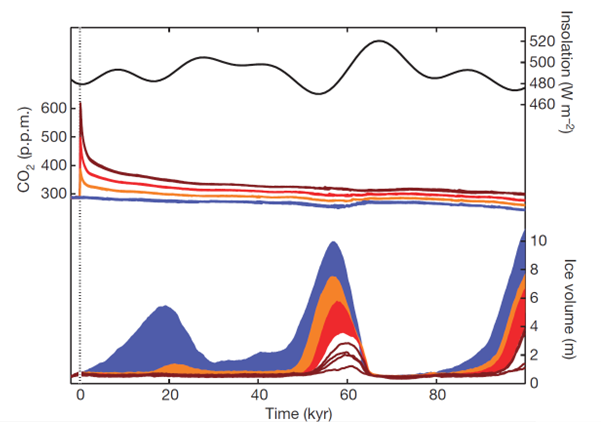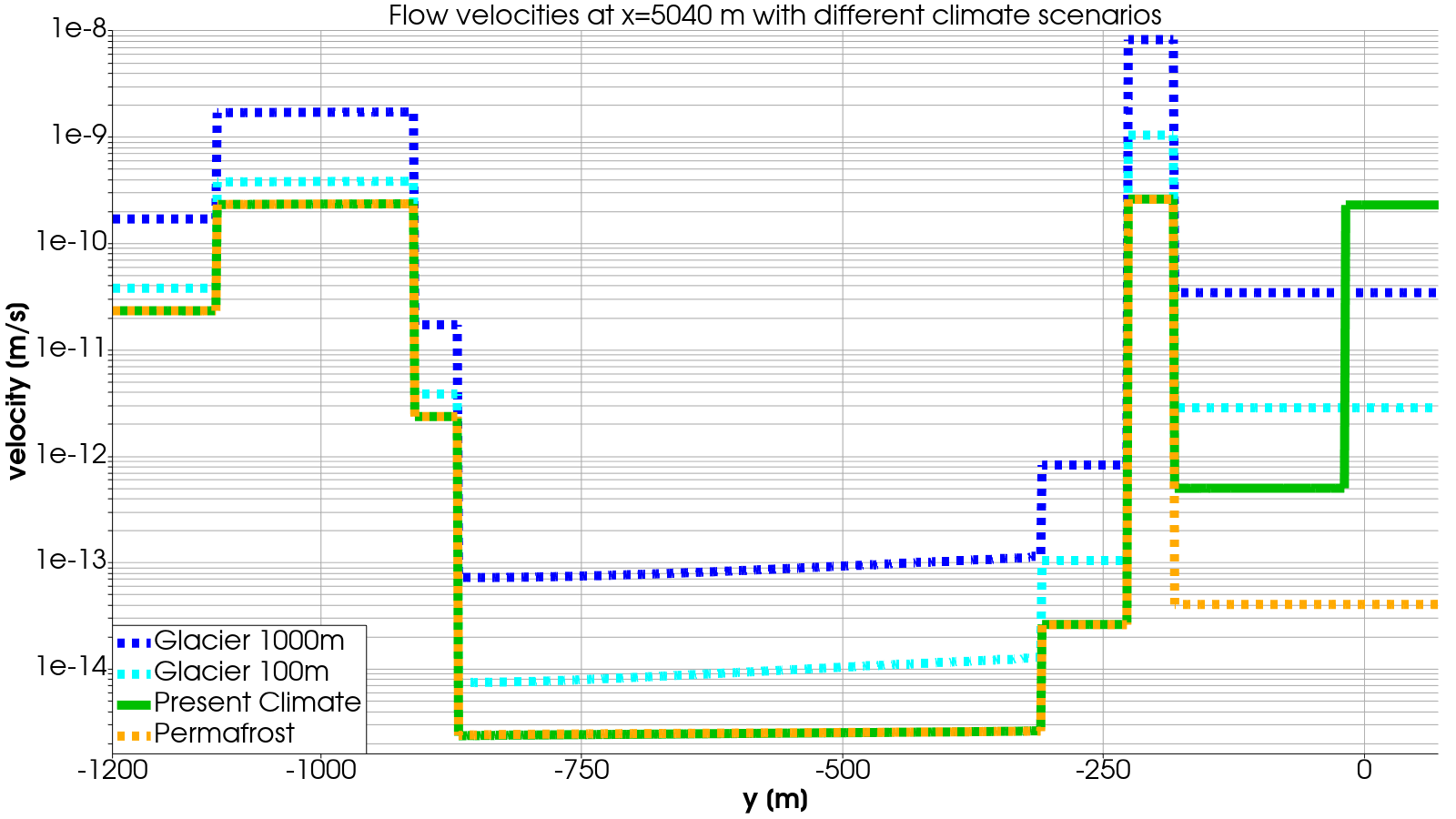¶ Reduction of scenario uncertainties through climate modelling
¶ Evaluating the robustness of the safety assessments and scenario uncertainties in high-level radioactive waste disposal using climate models
In order to assess the long-term safety of a repository for high-level radioactive waste, possible developments, including climatic changes, relevant to the design of the repository and the assessment of long-term safety must be determined and described for an assessment period of one million years. Reliable and scientifically sound prognosis of future climate evolution, especially under anthropogenic influence, is needed, but so far, a limited number of studies of long-term climate evolution have been performed. With the modeling of the future climate using physics-based climate and impact models, however, a quantitative assessment of the uncertainties with regard to possible future climate scenarios, including the timing and the extent of future glaciations in Germany, can be carried out.
The research project will address the following topics:
- When does the next glacial cycle begin? What is the influence of anthropogenic CO2 emission? Which regions in Germany will be affected? What are the uncertainties?
- Will future glacial cycles differ from those in the past? Will glacial cycles last longer and ice sheets reach further?
- How can results of climate modelling be transferred to stylized climate states for dose calculations?
- What are the impacts of the results of climate models on uncertainties of safe enclosure of radioactive waste in a repository?
¶ Earth system model of intermediate complexity (PIK)
Using the new Earth system model of intermediate complexity (EMIC) CLIMBER-X, the Potsdam Institute for Climate Impact Research (PIK) will provide a set of future scenarios of climate evolution, including sea level changes, for the next 100,000 years (more detailed scenarios) and for the next one million years. The following figure depicts exemplarily the evolution of maximum summer solar irradiance at 65°N (top), the simulated CO2 concentration over the next 100,000 years for four colored cumulative CO2 emission scenarios (middle) and simulated ice volume (bottom) (Ganopolski et al., 2016). Based on the results from climate modelling, a detailed analysis of the model simulations will be performed to assess possible uncertainties in future scenarios related to the uncertainties in the cumulative anthropogenic CO2 emission and the uncertainties in the model parameters.

¶ Numerical groundwater models with climate scenarios (GRS)
The Gesellschaft für Anlagen- und Reaktorsicherheit (GRS) gGmbH will examine the effects of climate modeling and the uncertainties on the design of a repository system and develop strategies for dealing with uncertainties with regard to the long-term safety of a repository for high-level radioactive waste. In a first step, the important impacts of possible future climate scenarios on long-term safety will be compiled based on a literature review. Additionally, dose calculations will be carried out using biosphere models, that take into account both the current conditions in Germany and the assessments from the climatic models in order to map potential climate developments in Germany over the assessment period. In a second step, codes suitable for addressing selected topics of scenario uncertainties are selected, model calculations will be carried out and the results will be evaluated. A probabilistic sensitivity study will be used to systematically record and evaluate the influence of parameter uncertainties on the uncertainty of the results of the models.
¶ Triggers and impacts of climate changes
The evaluation of future climate scenarios plays a fundamental role in assessing the long-term safety of a repository for High Level Waste (HLW). Earth orbit parameters, solar radiation, meteorites impacts, vulcanism, plate tectonics, and material cycles, also influenced by anthropogenic impacts, cause changes in climate. These triggers have influence on temperature and pressure conditions and can lead to processes like glaciation, permafrost, sea level changes, erosion and subrosion, and isostatic adjustment.
¶ Methods for modeling climate scenarios
The model geometry and parameterization is based on the generic site models for clay from the RESUS and ANSICHT projects. For numerical modelling the flow and transport code d3f++ is used. The code is able to model the advection, dispersion, diffusion, sorption, decay and density driven flow and was developed by the GRS since the 90's.
The calculations for the different climate states are represented by changing boundary conditions for the flow field. For the present climate state the generic values from the RESUS and ANSICHT North models are used. For the Permafrost model the upper layers has decreased. The glacier scenarios are divided into a 100 m and a 1000 m glacier load, simulated by a higher hydraulic pressure on the model surface. Sea level changes are modeled by increasing the surface model hydraulic pressure and an influence of salt water intrusion, but without inflow at the right and left model boundaries. Glacier channels should be described by a higher permability in areas which are affected of glacial channels.
¶ Results
- Flow velocities are to be assessed as favorable in the containment-providing rock zone (CRZ) according to the StandAG in all modelled climate scenarios with velocities below 1∗10-13 m/s.
- Permeability changes in upper layer for Permafrost has nearly no influence on flow velocity in CRZ and non-sorbing tracer concentration distribution.
- Around 25 m above and below the repository represented as tracer source, the concentration after 100,000 years is proportionally 0.1 % of the entered tracer concentration; the concentration front has not reached the CRZ (Top Barremium at around -300 m).
- Slight distribution of concentration in flow direction and in depth because of the given boundary conditions; effect is stronger with thick ice sheet load of 1000 m.
